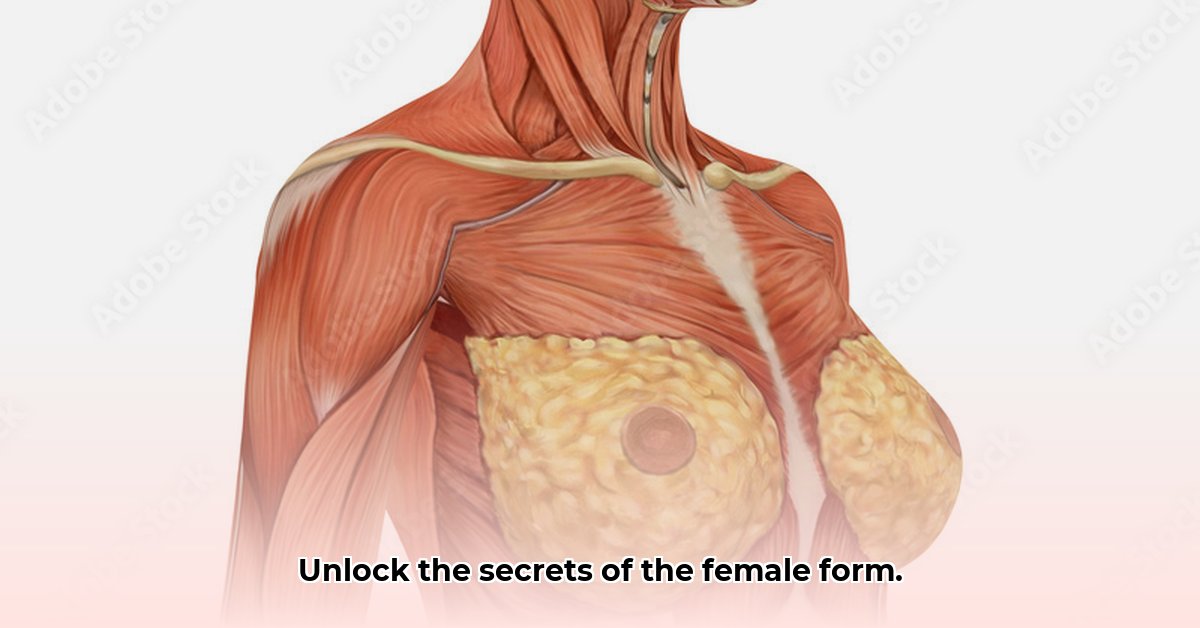Ever wondered what’s really going on inside the female body, from the ribcage down? This guide breaks down the female torso in a clear, easy-to-understand way. We’ll explore the bones, muscles, and all the important organs – lungs, stomach, everything! – and how they work together. Whether you’re a student, a healthcare professional, or just curious, we’ll help you build a solid understanding of this amazing system, clearing up any confusion along the way. For a more visual understanding, check out this helpful female body reference. Get ready to discover the fascinating world of female torso anatomy!
Female Torso Anatomy: A Comprehensive Guide
Let’s explore the amazing world of the female torso! Think of it as a bustling city, with different neighborhoods (organ systems) all working together. We’ll look at each area, focusing on how they all connect to keep you healthy and functioning.
The Skeletal Framework: Your Body’s Internal Scaffolding
First, let’s lay the groundwork – the bones. Imagine your torso’s skeleton as a strong, flexible framework holding everything in place. This framework includes your rib cage, a protective shell guarding your heart and lungs, consisting of 12 pairs of ribs connected to the sternum (breastbone). The spine, a flexible column of 33 vertebrae, provides support and allows you to bend and twist. The cervical spine (neck), thoracic spine (mid-back), and lumbar spine (lower back) each contribute to the torso’s range of motion. Finally, the pelvis, a bowl-like structure at the bottom, connects your spine to your legs and plays a vital role in childbearing, supporting the weight of the upper body and protecting reproductive organs. It’s the sturdy base upon which your upper body sits. These bones provide the structural support for everything else within your torso. Did you know the female pelvis is broader and shallower than the male pelvis, a key adaptation for childbirth, averaging about 1-2 inches wider?
Muscles in Motion: The Body’s Powerhouse
Now, let’s add the muscles – the engines of movement. These aren’t just passive components; they’re active players, working constantly to keep you upright, to help you breathe, and to enable movement. The diaphragm, a dome-shaped muscle under your lungs, is a key player in breathing, separating the thoracic cavity from the abdominal cavity. Every time you inhale and exhale, this muscle contracts and relaxes, changing the pressure and allowing air to flow in and out of your lungs. Then there are your abdominal muscles – think of the rectus abdominis (the “six-pack” muscle), the obliques (internal and external), and the transverse abdominis – which provide core strength and stability, protecting the internal organs. Your back muscles, including the erector spinae group, support your spine and enable movement, maintaining an upright posture. All these muscles work together in a complex dance, ensuring efficient movement and providing stability. Picture them as a finely-tuned orchestra, each section playing its part for a harmonious performance.
Respiratory System: The Breath of Life
Let’s dive into your respiratory system – how you breathe. The lungs, nestled safely within your rib cage, are the main stars here. The right lung has three lobes, while the left lung has two, making space for the heart. They inhale oxygen, which you need to live, and exhale carbon dioxide, a waste product. The trachea (windpipe) acts as the air highway, directing air to and from your lungs. The bronchi branch off the trachea, leading into each lung and further dividing into smaller bronchioles. The diaphragm plays a central role, contracting and relaxing to help the lungs expand and contract, facilitating the exchange of gases. Breathing seems simple, but it’s a complex, coordinated effort of multiple organs working together! The diaphragm contracts approximately 12-20 times per minute during normal breathing, moving about 500 milliliters of air with each breath. Is that a fascinating fact?
Digestive System: Fueling Your Body
Your digestive system is an incredible processing plant, converting food into energy and nutrients. It begins in your torso with the esophagus, which transports food from the mouth to the stomach. The stomach, a muscular sac, churns and mixes food with gastric juices, breaking it down. The liver, the largest internal organ, acts as a filter, removing toxins, and processes nutrients, producing bile to aid in fat digestion. The pancreas produces digestive enzymes that further break down carbohydrates, proteins, and fats. The small and large intestines continue breaking down food and absorbing vital nutrients. The small intestine, about 20 feet long, is where most nutrient absorption occurs. The large intestine absorbs water and electrolytes, forming solid waste. The whole system is a continuous process, making energy available to power your body. It’s like a sophisticated assembly line, transforming raw materials (food) into usable energy.
Circulatory System: The Body’s Delivery Network
Imagine your circulatory system as an extensive highway network, constantly delivering vital supplies to every corner of your body. The heart, your body’s central pump, is located in your chest, slightly to the left, protected by the rib cage. It pushes oxygen-rich blood through the aorta (the body’s largest artery) to all parts of the body, then collects oxygen-depleted blood via the vena cava (the body’s largest vein) to return to the lungs for oxygenation. The pulmonary artery carries deoxygenated blood to the lungs, while the pulmonary vein returns oxygenated blood to the heart. Major blood vessels crisscross your torso, carrying nutrients and oxygen to each organ and removing waste products. This continuous flow ensures your cells receive what they need to function properly. It’s a constant, vital circulation, keeping everything running smoothly. Did you know that the aorta, the body’s largest artery, is about 2.5 centimeters in diameter as it originates in the heart and extends down through the torso, branching off to supply blood to various organs?
Reproductive System: A Unique System
The female reproductive system is unique and remarkable. The ovaries, located on either side of the uterus, produce eggs and hormones like estrogen and progesterone. The fallopian tubes, narrow ducts, transport eggs from the ovaries to the uterus, the site of fertilization. The uterus is where a fetus develops during pregnancy, with the endometrium (uterine lining) providing nourishment. The cervix, the lower part of the uterus, connects the uterus to the vagina. The vagina connects the uterus to the external genitalia, serving as the birth canal and the pathway for menstrual flow. The intricate design of this system allows for conception, pregnancy, and childbirth. It’s a masterpiece of biological engineering. It’s a system that demonstrates the amazing complexity of the human body’s ability to reproduce.
The Interconnectedness of It All
It’s important to remember that all these systems are intricately connected, working together in harmony. For example, your respiratory system provides oxygen, which the circulatory system transports to other organs. Your digestive system provides the body with the nutrients it needs to function and repair itself. The nervous system controls and coordinates these functions via nerve signals. The lymphatic system helps maintain fluid balance and immune function. This interconnectedness highlights the incredible efficiency and complexity of the female torso. It’s all about the teamwork among the organ systems.
A Summary Table: Key Components and Functions
| System | Key Structures | Primary Functions |
|---|---|---|
| Skeletal | Rib cage, spine, pelvis, sternum | Structural support, protection of vital organs, movement |
| Muscular | Diaphragm, abdominal muscles, back muscles, intercostal muscles | Movement, posture, breathing, organ protection |
| Respiratory | Lungs, trachea, bronchi, bronchioles, alveoli | Oxygen intake, carbon dioxide removal, gas exchange |
| Digestive | Esophagus, Stomach, liver, pancreas, small intestine, large intestine | Food breakdown, nutrient absorption, waste elimination |
| Circulatory | Heart, aorta, vena cava, pulmonary artery, pulmonary vein, blood vessels | Transportation of blood, oxygen, nutrients, waste removal |
| Reproductive (Female) | Ovaries, fallopian tubes, uterus, cervix, vagina | Egg production, fertilization, fetal development, childbirth, hormone production |
This guide offers a foundational understanding of female torso anatomy. Remember, this is a simplified overview; the human body is far more complex and continues to be studied and explored. There’s always more to learn!
How to Understand Complex Female Anatomy Diagrams
- The female torso, while similar to the male torso, has unique features shaped by hormones and reproductive function.
- These differences influence posture, movement, and health.
- Understanding these nuances is crucial for personalized healthcare and fitness.
Deciphering the Skeletal Structure
Let’s start with the bones. The female torso’s skeletal framework—the spine, ribs, sternum, and pelvis—forms the foundation. But did you know there are subtle yet significant shape differences compared to a male skeleton? These differences are largely determined by hormones and the demands of childbirth. Look for these key variations in diagrams:
- Pelvic Shape: Note the wider, broader, and shallower shape of the female pelvis, designed to accommodate childbirth. The subpubic angle, the angle formed by the pubic bones, is also wider in females.
- Rib Cage: Observe the rib cage; it tends to be slightly smaller and narrower in females, with a more conical shape compared to the
- Gluten Free Meal Prep Ideas for Delicious, Hassle-Free Eating - November 28, 2025
- Gluten Free Meal Prep for Stress-Free and Healthy Eating - November 27, 2025
- Quick And Easy Chicken Thigh Meal Prep For Weight Loss - November 26, 2025










